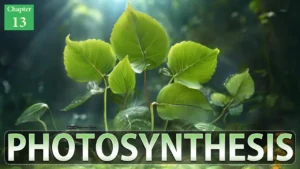In this article we will discuss about difference between chromatin and chromosome
Difference Between Chromatin and Chromosome
1. Structure: Chromatin is the complex of DNA, RNA, and proteins that make up the genetic material within the nucleus of a cell. Chromosomes, on the other hand, are condensed structures formed by tightly coiled and compacted chromatin.
2. Level of Compaction: Chromatin exists in a less condensed and more extended form, allowing access to the genetic information for processes such as transcription and replication. Chromosomes are highly condensed and visible during cell division when they become tightly packed.
3. Composition: Chromatin is composed of DNA molecules wrapped around histone proteins, forming nucleosomes. Chromosomes consist of multiple chromatin fibers that are further organized and condensed.
4. Location: Chromatin is found within the nucleus of the cell, while chromosomes are only visible during certain phases of the cell cycle and are typically located in the nucleus.
5. Number: A cell can have multiple chromatin fibers, while it typically has a specific number of chromosomes, which varies depending on the species.
6. Genetic Information: Chromatin contains the entire genetic material of an organism, including genes and non-coding DNA sequences. Chromosomes are individual structures that contain segments of DNA, including genes, regulatory elements, and other functional elements.
7. Stability: Chromatin is relatively stable and undergoes dynamic changes in response to cellular processes. Chromosomes are more stable structures that maintain the integrity of the genetic material during cell division.
8. Replication: Chromatin is replicated during the S phase of the cell cycle, while chromosomes are duplicated prior to cell division to ensure proper distribution to daughter cells.
9. Gene Expression: Chromatin structure can be modified to regulate gene expression, allowing certain genes to be activated or silenced. Chromosome structure helps maintain the stability and organization of genes during cell division.
10. Visibility: Chromatin is not readily visible under a light microscope, while chromosomes can be observed as distinct structures under a microscope during certain stages of the cell cycle.
Summary: Difference Between Chromatin and Chromosome
- Chromatin is the complex of DNA, RNA, and proteins, while chromosomes are condensed structures formed by tightly coiled chromatin.
- Chromatin is less condensed, while chromosomes are highly condensed.
- Chromatin is composed of DNA and histone proteins, while chromosomes consist of multiple chromatin fibers.
- Chromatin is found in the nucleus, while chromosomes are visible structures within the nucleus.
- A cell can have multiple chromatin fibers, while it typically has a specific number of chromosomes.
- Chromatin contains the entire genetic material, while chromosomes contain segments of DNA.
- Chromatin undergoes dynamic changes, while chromosomes maintain stability.
- Chromatin is replicated during the S phase, while chromosomes are duplicated before cell division.
- Chromatin structure can regulate gene expression, while chromosome structure maintains gene stability.
- Chromatin is not visible under a light microscope, while chromosomes can be observed during certain stages of the cell cycle.
Read More:
Cell Biology Notes



![[PPT] The living world Class 11 Notes](https://rajusbiology.com/wp-content/uploads/2024/06/PPT-The-living-world-Class-11-Notes-300x169.webp)
